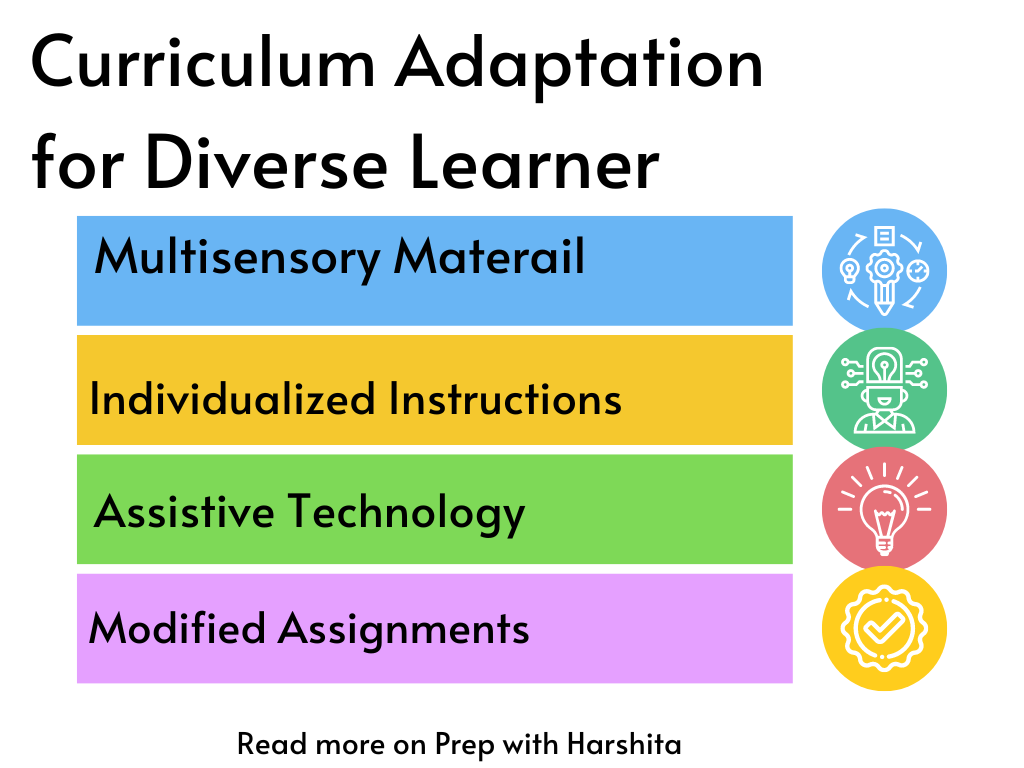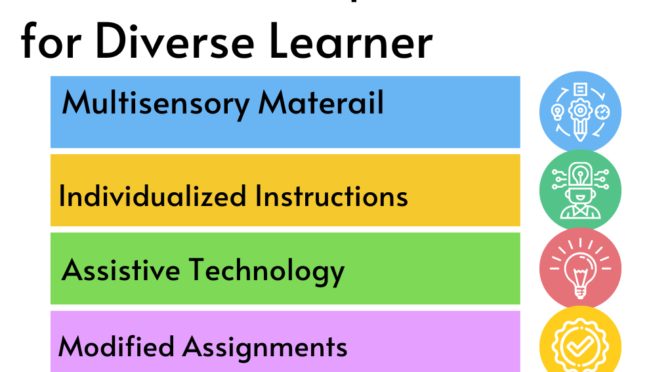In order to create an inclusive learning environment that accommodates diverse learners, curriculum adaptations for diverse learners can be implemented. These adaptations should be tailored to the individual needs of each learner in order to ensure that they are able to access and engage with the curriculum.
Here are some examples of curriculum and curricular adaptations for diverse learners:
- Multi-sensory materials: Multi-sensory materials can help students who have difficulty learning through traditional methods. These materials engage the senses of sight, hearing, touch, and movement to reinforce learning. For example, using manipulatives such as blocks, counters, and other tangible objects can help students understand math concepts. Using videos, songs, or podcasts can help students with auditory learning preferences understand concepts.
- Individualized instruction: Individualized instruction tailors the curriculum to the learning needs of individual students. It takes into account the student’s learning style, strengths, and weaknesses. This can include personalized learning plans, targeted instruction, and additional support. For example, a student with dyslexia may need additional support in reading or writing, while a student with ADHD may need a structured learning environment to help them stay focused.
- Differentiated instruction: Differentiated instruction involves adjusting the curriculum to meet the varying needs of students. It recognizes that students learn at different rates and have different learning styles. Teachers can differentiate instruction by providing varied activities and assignments, leveled reading materials, and flexible grouping. For example, a teacher may provide different levels of reading materials to meet the needs of all students in a class.
- Assistive technology: Assistive technology helps students with disabilities or learning difficulties to access the curriculum. It can be used to provide access to written materials, allow students to work at their own pace, and support the development of skills. Examples of assistive technology include screen readers, text-to-speech software, speech recognition software, and dictation software.
- Modified assignments: Modified assignments provide students with alternative ways to demonstrate their learning. They can be used to support students who struggle with traditional assignments or assessments. Modifications may include simplifying the task, changing the format of the assignment, or providing additional support. For example, a student with dysgraphia may be allowed to type their answers instead of writing them by hand.
- Flexible grouping: Flexible grouping allows students to work with others who have similar learning needs or styles. It can be used to support collaboration and provide targeted instruction. For example, a teacher may group students based on reading level, learning style, or interests.
- Accommodations for testing: Accommodations for testing help students with disabilities or learning difficulties to demonstrate their knowledge and skills. Accommodations can include extra time, a quiet environment, the use of a scribe, or the use of technology. The accommodations used will depend on the student’s needs and the type of assessment.
Also Read : NPE
In conclusion, curriculum and curricular adaptations can help to create an inclusive learning environment that accommodates diverse learners. These adaptations can be tailored to meet the needs of individual students, and may include multi-sensory materials, individualized instruction, differentiated instruction, assistive technology, modified assignments, flexible grouping, and accommodations for testing. By providing a range of adaptations, educators can help all students to access the curriculum and achieve their full potential.
Also Visit : Prep with Harshita


